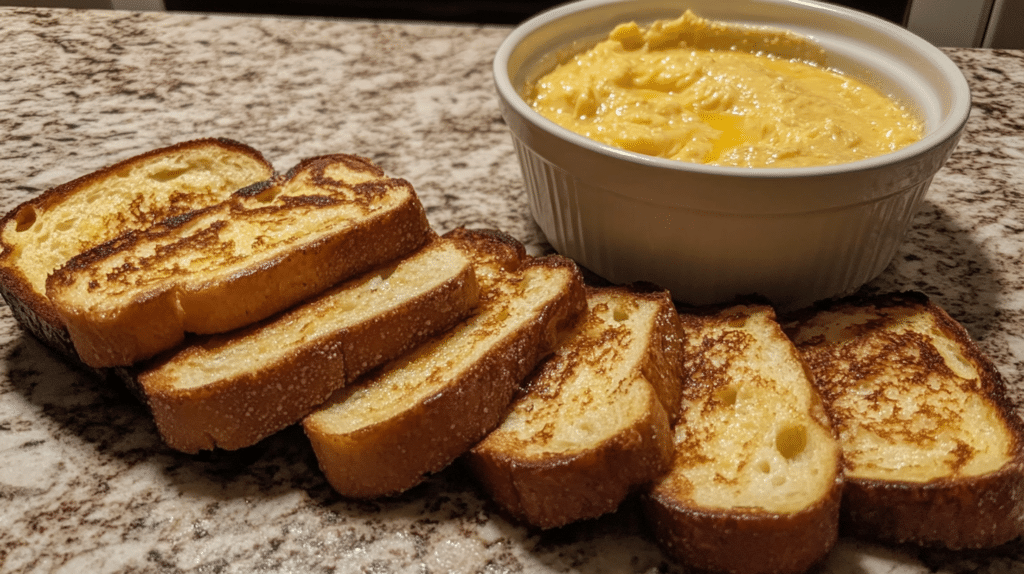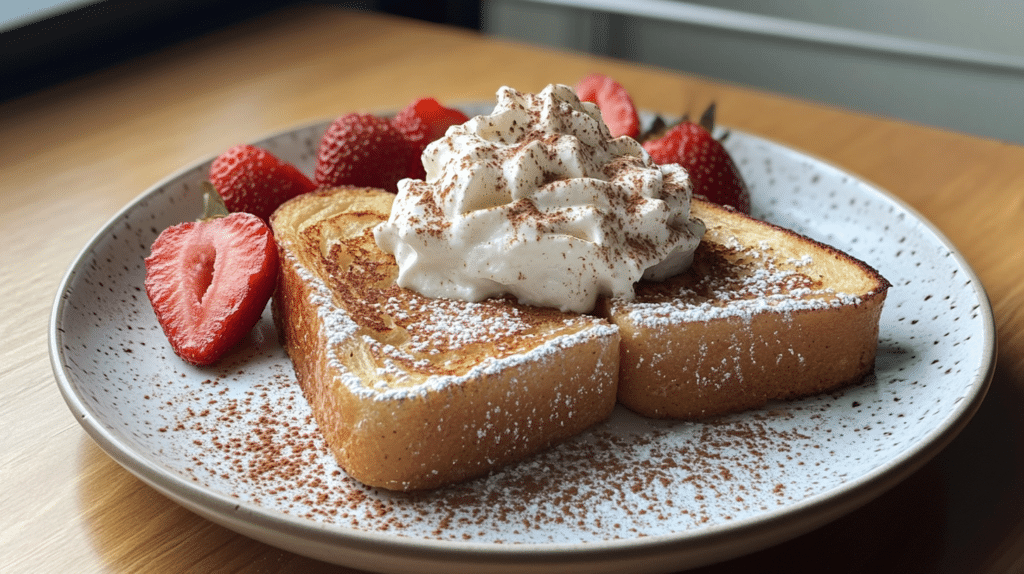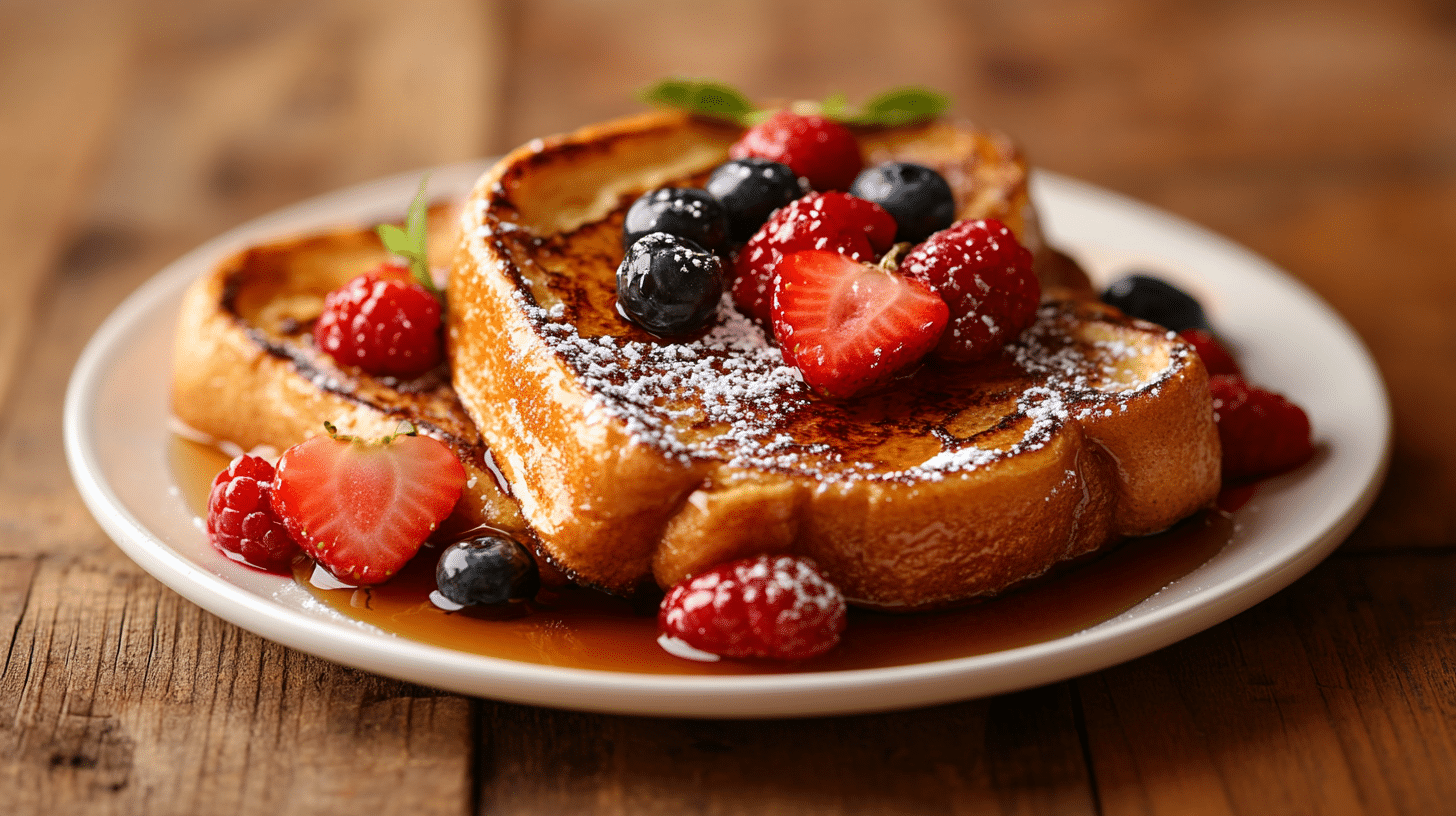Introduction
French toast is a beloved breakfast staple, known for its golden-brown crust and creamy interior. Despite its simplicity, making perfect French toast can be surprisingly tricky. Even experienced cooks can fall victim to common French toast mistakes that compromise texture, flavor, or presentation. One of the most common mistakes in making French toast is failing to use the right bread and preparation techniques, which leads to soggy, dry, or unevenly cooked results.
In this article, we’ll dive deep into the most common mistakes in making French toast, explore other missteps, and provide expert tips to ensure your French toast turns out perfect every time. With the right techniques, you can easily avoid these mistakes and enjoy French toast that’s always golden, delicious, and satisfying.
The Most common mistake in making French toast
Why Bread Selection is the Most Common Mistake in Making French Toast
Choosing the wrong bread is the leading reason many people fail to achieve perfect French toast. Here’s why:
- Bread Texture: Soft, airy bread often absorbs too much egg mixture, resulting in soggy toast. On the other hand, overly firm bread might not soak enough custard, leading to a dry interior.
- Freshness: Fresh bread tends to disintegrate when dipped into the custard mixture. Stale or day-old bread, slightly dried out, is sturdier and better absorbs the mixture without falling apart.
- Thickness: Bread slices that are too thin may burn quickly or fail to develop a soft, custardy center. Ideal slices are at least ¾ to 1 inch thick.
Best Bread Types to Avoid the Most Common Mistake in Making French Toast
- Brioche: This rich, buttery bread is a favorite for French toast because of its tender crumb and flavor.
- Challah: Slightly sweet and egg-based, challah offers a beautiful texture and golden color when cooked.
- French Bread: With its firm crust and soft interior, French bread works well when sliced thickly.
- Sourdough: For a tangy twist, sourdough bread provides excellent structural integrity and flavor.
Key Ingredients for Perfect French Toast: Avoiding Common Mistakes
The Importance of a Balanced Custard Mixture to Avoid Common Mistakes
French toast relies on a custard mixture, which is the blend of eggs and liquid used to coat the bread. A poorly balanced custard is another common mistake that can lead to subpar results. Here’s what to consider when preparing the custard:
- Eggs: Eggs provide structure and richness. A good ratio is about one egg for every ¼ cup of milk. Too many eggs can make the toast overly eggy, while too few can result in bland and limp toast.
- Milk or Cream: Milk adds moisture and helps distribute the egg mixture evenly. Whole milk or half-and-half works best for a creamy texture. Avoid low-fat milk, as it can make the custard watery. Heavy cream can be used for extra richness but should be diluted slightly with milk.
- Flavor Enhancers: Vanilla extract, cinnamon, nutmeg, and a pinch of salt elevate the taste of the custard. Adding sugar can be optional, as toppings like syrup often provide enough sweetness.
- Optional Liquids: Some chefs add a splash of orange juice, liqueurs (like Grand Marnier), or coffee for unique flavor profiles.
Preparing the Custard Properly
- Mix Thoroughly: Whisk the eggs and milk until completely smooth, ensuring there are no visible streaks of egg whites. This prevents uneven cooking, avoiding a patchy texture and helping the bread bake uniformly.
- Let It Rest: Letting the custard rest for a few minutes allows the spices to blend evenly, creating a more cohesive and flavorful mixture.

Bread Preparation Tips
- Dry the Bread: If your bread isn’t stale, lightly toast it in the oven or leave slices out for a few hours. This step ensures the bread won’t become overly saturated.
- Soak, Don’t Dunk: Instead of quickly dipping the bread, allow it to soak in the custard for 20-30 seconds per side. This ensures even absorption without making it soggy.
- Avoid Overcrowding: Dip one slice at a time, ensuring each piece is evenly coated and ready to cook without delays.
Ingredient Mistakes to Avoid
- Using Non-Dairy Milk Without Adjustments: Non-dairy milks, such as almond or oat milk, can be used, but their higher water content may affect the consistency. Opt for creamier varieties and consider adding a thickener, like a teaspoon of cornstarch, to maintain texture.
- Skipping Spices: A custard without spices will yield bland toast. Don’t skip the spices—they’re essential for creating a warm, aromatic flavor profile that elevates the dish.
Techniques to Avoid Soggy French Toast: Stop the Most Common Mistake
Proper Dipping Techniques
A soggy texture is one of the most common complaints about French toast. This often happens when bread is oversoaked or cooked improperly. Here’s how to get it right:
- Time the Soak: Thick slices should soak in the custard for about 20-30 seconds per side. Avoid leaving the bread in the mixture for too long, as it can become waterlogged.
- Coat Evenly: Make sure the custard penetrates the bread evenly. Flip each slice gently to coat both sides without breaking the bread.
- Drain Excess Custard: After soaking, let the bread rest on a wire rack or plate for a few seconds to drain excess liquid. This prevents pooling in the pan during cooking.
Achieving the Ideal Cooking Temperature
Cooking French toast at the wrong temperature is another common mistake. If the heat is too high, the outside will brown too quickly, leaving the inside undercooked. If it’s too low, the toast will dry out and fail to develop a golden crust.
- Preheat the Pan: Use medium heat to warm the skillet or griddle before adding butter or oil. A preheated surface ensures even cooking.
- Use the Right Fat: Butter adds flavor, but it can burn at high temperatures. For best results, use a combination of butter and a neutral oil (like vegetable oil) to prevent scorching.
- Monitor Cooking Time: Cook each side for 2-4 minutes, depending on the thickness of the bread. Look for a golden-brown crust that feels firm to the touch.
Tools and Techniques for Perfect Results
- Non-Stick Pan: A non-stick skillet or griddle helps ensure easy flipping and even browning. Cast iron is also a good option for its heat retention properties.
- Press Gently: Avoid pressing down on the bread with a spatula during cooking, as this can flatten it and force out the custard.
- Cook in Batches: To avoid overcrowding, cook only 2-3 slices at a time. Overcrowding lowers the pan’s temperature, leading to uneven cooking.
Common Mistakes to Avoid
- Cold Pan or Skillet: Starting with a cold pan can cause the bread to stick and absorb too much fat.
- Too Much Butter: While butter is flavorful, overusing it can make the toast greasy. Balance the quantity to achieve a crisp exterior.
- Flipping Too Soon: Let the bread cook thoroughly on one side before flipping to ensure a consistent texture and color.
Balancing Texture and Flavor
The Perfect Custard-to-Bread Ratio
A key element of great French toast is achieving a harmonious balance between a creamy interior and a crispy exterior. Here’s how to perfect the ratio:
Don’t Oversaturate: Avoid using thin bread or soaking it too long. Overly soaked bread can result in a soggy texture. Stick to thick, sturdy slices and soak them just enough to absorb the custard evenly.
Ensure Custard Evenness: Whisk the custard mixture thoroughly before dipping each slice to ensure that the flavor and texture are consistent throughout, making each serving perfectly balanced.
Creating the Ideal Exterior
The exterior of French toast should be golden brown with a light crispiness that contrasts beautifully with the soft interior. Here’s how to achieve it:
- Use the Right Fat: Butter adds richness, while a bit of neutral oil prevents burning. This combination ensures an even crust.
- Control the Heat: Medium to medium-high heat works best. Too high, and the toast may burn before the interior is cooked. Too low, and the bread may turn out soggy.
- Flip Carefully: Use a spatula to gently flip the slices to maintain the structure and avoid breakage.
Elevating Flavor with Toppings
While French toast is delicious on its own, the right toppings can take it to the next level.
- Sweet Toppings: Maple syrup, powdered sugar, honey, and whipped cream are classic choices.
- Fresh Fruits: Add vibrancy and a touch of freshness with berries, banana slices, or citrus zest.
- Savory Options: For a unique twist, serve French toast with crispy bacon, cheese, or even a fried egg.
- Spiced Enhancements: Sprinkle cinnamon sugar, nutmeg, or cardamom on the finished toast for a burst of flavor.
Common Flavor Mistakes
- Overloading Toppings: Too many toppings can overwhelm the dish and make it soggy. Choose complementary flavors and use them sparingly.
- Neglecting Spices: Adding spices like cinnamon and vanilla to the custard elevates the flavor profile and adds warmth.
- Skipping Salt: A small pinch of salt in the custard enhances sweetness and balances the dish.
Creative Variations to Try
- Stuffed French Toast: Fill the bread with cream cheese, Nutella, or fruit preserves for an indulgent surprise.
- Savory French Toast: Swap sugar and spices for herbs and cheese to create a dish perfect for brunch.
- French Toast Casserole: Bake slices in a rich custard for a make-ahead option ideal for feeding a crowd.

Frequently Asked Questions (FAQs) about the Most Common Mistakes in Making French Toast
Why Is My French Toast Always Soggy?
Soggy French toast is often the result of using overly fresh or soft bread, soaking the bread for too long, or cooking at too low a temperature. To avoid this, use slightly stale, thick-sliced bread, soak briefly, and cook on medium heat.
Can I Make French Toast with Gluten-Free Bread?
Yes, gluten-free bread can be used, but choose a brand with a firm texture. Lightly toast the bread beforehand to improve its ability to absorb the custard without becoming too fragile.
Should I Add Sugar to the Custard Mixture?
Adding sugar to the custard mixture is optional and depends on personal preference. Many people skip it, relying on toppings like syrup or powdered sugar to provide sweetness. If you prefer a sweeter base, add a tablespoon of sugar per cup of milk.
What’s the Best Way to Keep French Toast Warm Before Serving?
To keep French toast warm while preparing multiple servings, place the cooked slices on a baking sheet in an oven preheated to 200°F (93°C). This keeps the toast warm and crispy without drying it out.
Can French Toast Be Made Ahead of Time?
Yes, you can prepare French toast ahead of time by cooking the slices, letting them cool, and storing them in an airtight container in the fridge for up to 2 days. Reheat in a toaster oven or skillet to restore crispiness.
How Can I Make Vegan French Toast?
For vegan French toast, replace the eggs with a mixture of plant-based milk and a thickener like cornstarch, mashed bananas, or flaxseed meal. Use vegan butter or oil for cooking and opt for sturdy vegan bread.
Conclusion
Perfect French toast starts with avoiding common mistakes, particularly choosing the wrong bread and improper preparation techniques. Opt for thick, slightly stale bread like brioche or challah to ensure a custardy interior and crispy exterior. Prepare a well-balanced custard mixture with the right ratio of eggs to milk and enhance it with spices like cinnamon and vanilla for added flavor.
Mastering the soaking and cooking process is equally important—soak the bread just enough to absorb the custard evenly, and cook on medium heat to achieve a golden-brown crust. Don’t forget to experiment with toppings, from classic maple syrup to creative savory additions, to make your French toast a standout dish.
By following these tips and avoiding common errors, you can elevate your French toast game and enjoy a consistently delicious and satisfying breakfast treat. Whether you’re a seasoned cook or a beginner in the kitchen, perfecting French toast is an achievable goal that rewards your taste buds every time.

